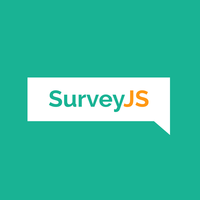FluidFramework
automerge
Our great sponsors
| FluidFramework | automerge | |
|---|---|---|
| 12 | 45 | |
| 4,613 | 3,081 | |
| 0.4% | 5.5% | |
| 10.0 | 9.1 | |
| 5 days ago | 9 days ago | |
| TypeScript | JavaScript | |
| MIT License | MIT License |
Stars - the number of stars that a project has on GitHub. Growth - month over month growth in stars.
Activity is a relative number indicating how actively a project is being developed. Recent commits have higher weight than older ones.
For example, an activity of 9.0 indicates that a project is amongst the top 10% of the most actively developed projects that we are tracking.
FluidFramework
- FluidFramework: Build distributed, real-time collaborative web applications
-
Ask HN: What Are You Working on This Year?
Have you seen FluidFramework? It's open source (MIT): https://github.com/microsoft/FluidFramework
I think the first product they're building on it is Loop: https://www.zdnet.com/article/microsoft-introduces-loop-a-ne...
- Ask HN: Apps that are built with Git as the back end?
- Realtime: Multiplayer Edition
- Fluid Framework: Data Sync Reimagined
-
Woe be onto you for using a WebSocket
Full disclosure I work at MSFT and on the fluid framework.
If you are interested in this you may also be interested in the fluid framework, https://github.com/microsoft/FluidFramework
We use websockets and solve a lot of the state management problem called out here by keeping very little state on the server itself. The primary thing on server is a monotonically increasing integer we use to stamp messages, this gives us total order broadcast which we then build upon: https://en.m.wikipedia.org/wiki/Atomic_broadcast
Here are some code pointers if you want to take a look:
The map package is a decent place to look for how we leverage total order broadcast to keep clients in sync in our distributed data structures:
-
Microsoft Launches Google Wave
(Disclosure: Work at Microsoft, but I work in Azure and some open source stuff, not on or directly with Fluid/Office/etc.)
That's just a trademark clause for Microsoft logos and brands. The Fluid Framework itself is [MIT licensed](https://github.com/microsoft/FluidFramework/blob/main/LICENS...) and doesn't require exposing any of those logos/brands when you use it, so the framework itself is fairly open for usage.
I think the main thing that would slow down adoption for Fluid is that the only "production" backend is an Azure service, which isn't part of the open source Fluid Framework. [Other open source backends](https://fluidframework.com/docs/deployment/service-options/) aren't recommended for productions. Until there are some open source ones, I'd assume adoption will be limited to folks in the Azure ecosystem.
-
The Lost Apps of the 80s
Within the context of the Microsoft-verse, Fluid Framework (https://fluidframework.com) is supposed to be solving similar problems in web apps, although I haven't personally played with it.
-
A couple of questions about dotnet from a Java developer :)
Microsoft recently open sourced fluid framework. It is a distributed, consensus based, real time collaboration framework written in typescript. Fluid would keep your clients synced up and your server code would only have to handle when someone hits submit. Fluid Framework
-
Fluid Framework discovery
The official documentation and the github repository seem clear.
automerge
- Automerge CRDT
-
Flutter offline
I'm not aware of any usable CRDT implementations for Dart, my plan is to use the flutter_rust_bridge to make use of automerge v2, which is a full CRDT implementation written in Rust that has the advantage of having a very simple API to work with (basically a key/value store).
- Ask HN: What is new in Algorithms / Data Structures these days?
-
Best local database that works on all platforms including web?
Yes. I asked the devs about ideas for this in this ticket and got an interesting response. It's aimed towards server-side handling, but the same ideas apply to local storage as well.
- Show HN: Pg_CRDT – an experimental CRDT extension for Postgres
-
CRDTs: A Beginner's overview for building a collaborative app
There are a lot of implementations of CRDTs out there. In JavaScript, for instance, we have Y.js (https://github.com/yjs/yjs) and automerge (https://github.com/automerge/automerge). There’s also a Y.js demo (https://demos.yjs.dev/prosemirror/prosemirror.html) that allows you to play around with them and have your own collaborative app running in just a few seconds. All messages are exchange via webRTC and manages the state via CRDTs. This can be a great sandbox to understand how CRDTs work and see.
-
Evan Wallace CRDT Algorithms
Anyone unsure of what a CRDT is, this is the perfect intro: https://www.inkandswitch.com/peritext/
The two most widely used CRDT implementations (combining JSON like general purpose types and rich text editing types) are:
- Automerge https://github.com/automerge/automerge
-
Should I Move From PHP to Node/Express?
For instance, practicing "local first web" using automerge with all it's Distributed Persistence Primitives on CRDT's and Vector Clocks - i.e. when the Browser View is treated like a Database replica, essentially; or adopting a real data mapper that's giving you an API from your database Schema, using Prisma or Hasura... or even implementing a custom codegenereted one, as a babel plugin, on top of TSED and Micro-ORM.
- Maintaining Referential Integrity During Insertions And Deletions
- Muse 2.0
What are some alternatives?
SyncedStore - SyncedStore CRDT is an easy-to-use library for building live, collaborative applications that sync automatically.
yjs - Shared data types for building collaborative software
Joplin - Joplin - the secure note taking and to-do app with synchronisation capabilities for Windows, macOS, Linux, Android and iOS.
crdt-benchmarks - A collection of CRDT benchmarks
Command Line Parser - The best C# command line parser that brings standardized *nix getopt style, for .NET. Includes F# support
y-websocket - Websocket Connector for Yjs
rsocket-java - Java implementation of RSocket
slate-yjs - Yjs binding for Slate
crdt-event-fold - A Haskell library providing a garbage collected CRDT event accumulation datatype.
jsynchronous - Jsynchronous.js - Data synchronization for games and real-time web apps.
y-crdt - Rust port of Yjs
